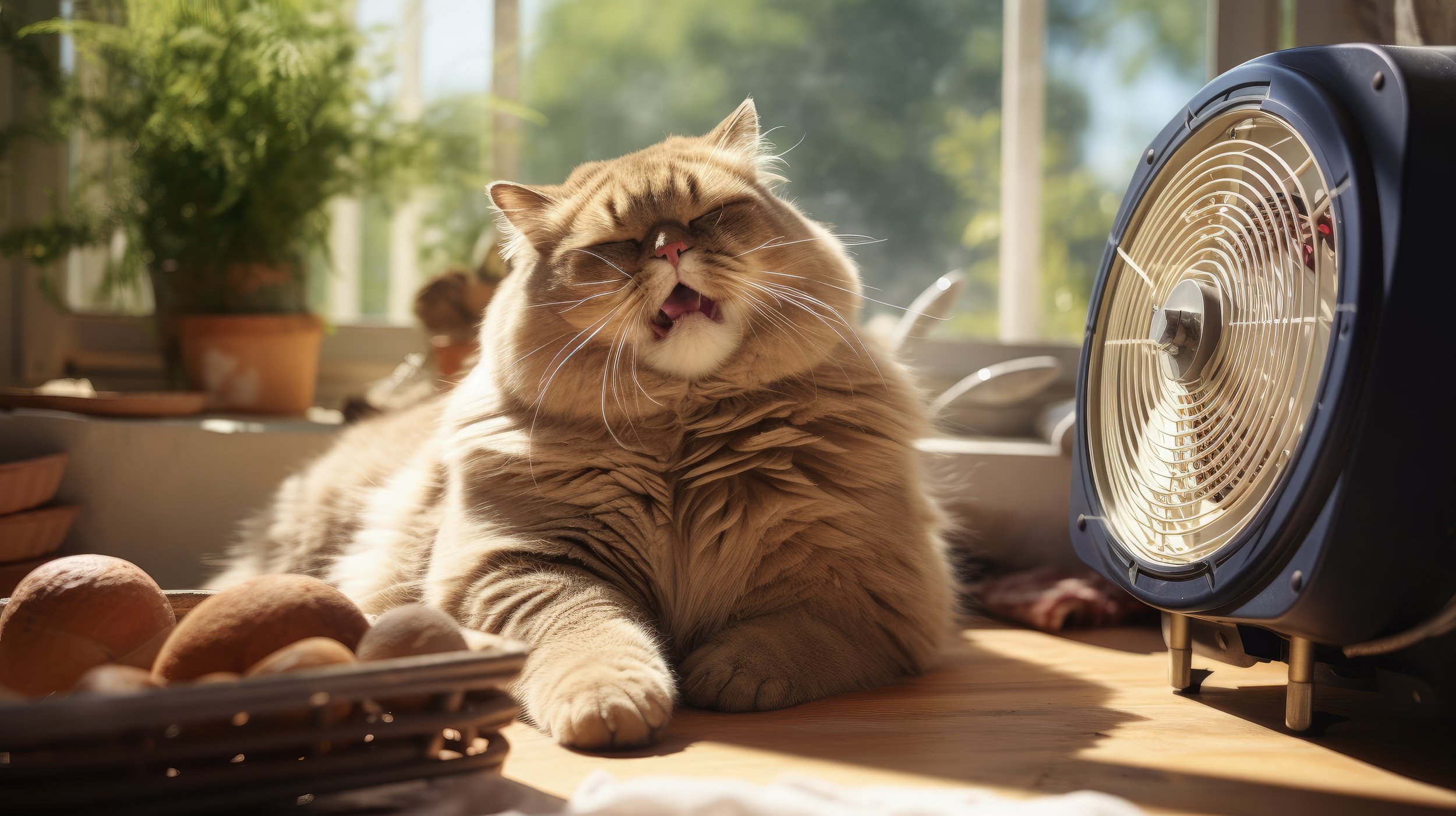Keeping Your Feline Safe in Extreme Weather: Floods, Heat Waves and Extreme Cold
Weather is unpredictable and, at times, quite intense. As humans, we can usually look to our local meteorologists to help us anticipate these things, but cats don’t have that same luxury. Despite being resilient little creatures, they are also at risk when extreme weather hits, and arming yourself with knowledge is the best way to help them conquer those difficult days. Whether it's floods, heat waves, or bone-chilling cold, this guide will explore some practical tips to help you protect your cat during these challenging conditions.
Floods
Floods can be a serious threat to both humans and animals alike. Here's how you can keep your cat safe during a flood:
1. Keep your cat indoors: While we believe all cats should be kept indoors, if your cat goes outside, as soon as you hear news of an impending flood, bring them indoors and keep them there until you are sure it is safe. Floods can move quickly and unpredictably, and if your cat is gone all day, you have no way of making sure they are safe in an emergency.
2. Create a safe space: Designate a high area in your home where your cat can seek refuge if flooding occurs. Ideally this would be a second floor, but if your home does not have a second floor, find some sturdy shelves or prepare a high space on a countertop.
3. Prepare an emergency kit: Pack a waterproof bag with essentials such as food, water, medications, and a first aid kit (for your cat) in case you need to evacuate quickly. Some floods can completely shut down a town or city, so if you need to move, you will likely need to move quickly.
Heat Waves
During a real scorcher of a heat wave, cats can easily become overheated and dehydrated. Remember, they have fur coats permanently stuck to their skin. And, while they have an average internal operating temperature much higher than a human’s, it doesn’t mean they are invulnerable to overheating or dehydration. Below are some suggestions to keep your kitty cool and comfortable:
1. Provide ample water: Ensure your cat has access to fresh, clean water at all times. Consider adding ice cubes to their water bowl to keep it cool and combat the higher rate of evaporation in high temperatures.
2. Create shady spots: Set up shady areas in your home where your cat can escape the heat. This can be achieved by closing curtains or using sunshades, or you can even build them a little fort out of old boxes and a glue gun!
3. Use fans or air conditioning: At minimum, if you have an indoor cat in an extreme heat wave, you need to provide a fan. Air conditioning is best, but not everyone has access to it. Fans, however, can be acquired relatively cheap, especially if purchased used. These will help regulate your cat’s internal temperature better than anything else.
Extreme Cold
Cats are susceptible to cold weather just as we are. Like we mentioned earlier, we do not condone letting cats outside anymore, however wo do understand there are still many families who practice this. In extreme cold, especially if you’re letting them outside, you need to be mindful of your cat’s safety.
1. Limit outdoor exposure: Keep your cat indoors during cold weather whenever possible. If they must go outside, limit their time outdoors and provide a warm shelter.
2. Create insulated outdoor shelters: If your cat spends time outdoors, they will need an outdoor shelter. Outdoor shelters should not be treated as an excuse to let your cat out in extreme cold. They are a last resort for your cat to avoid frostbite or hypothermia if they happen to be outside. When building the shelter, look online for suggestions or instructions from people who have built them with success. Heat lamps, straw, blankets and a wall that deflects the breeze are just a few elements to include.
3. Check for signs of hypothermia or frostbite: Watch for signs of hypothermia in your cat, such as shivering, lethargy, or cold ears and paws. If you suspect your cat is suffering from hypothermia, seek veterinary care immediately. Additionally, frostbite is something cats frequently suffer from in the cold. Ear tips, noses, paw pads and tails are frequent victims of frostbite, and once they are bitten, usually that piece of the body needs to be amputated.
Final Thoughts
Handling extreme weather conditions with your cat is a mixture of preparation and practical approaches. Put yourself in your cat’s shoes and ask yourself what you might need in those conditions. By following the tips outlined in this guide, you can ensure that your cat will likely remain healthy and happy no matter what Mother Nature throws your way. Stay vigilant, stay prepared, and most importantly, shower your feline friend with love and attention when the weather is bad… and even when it is good!

